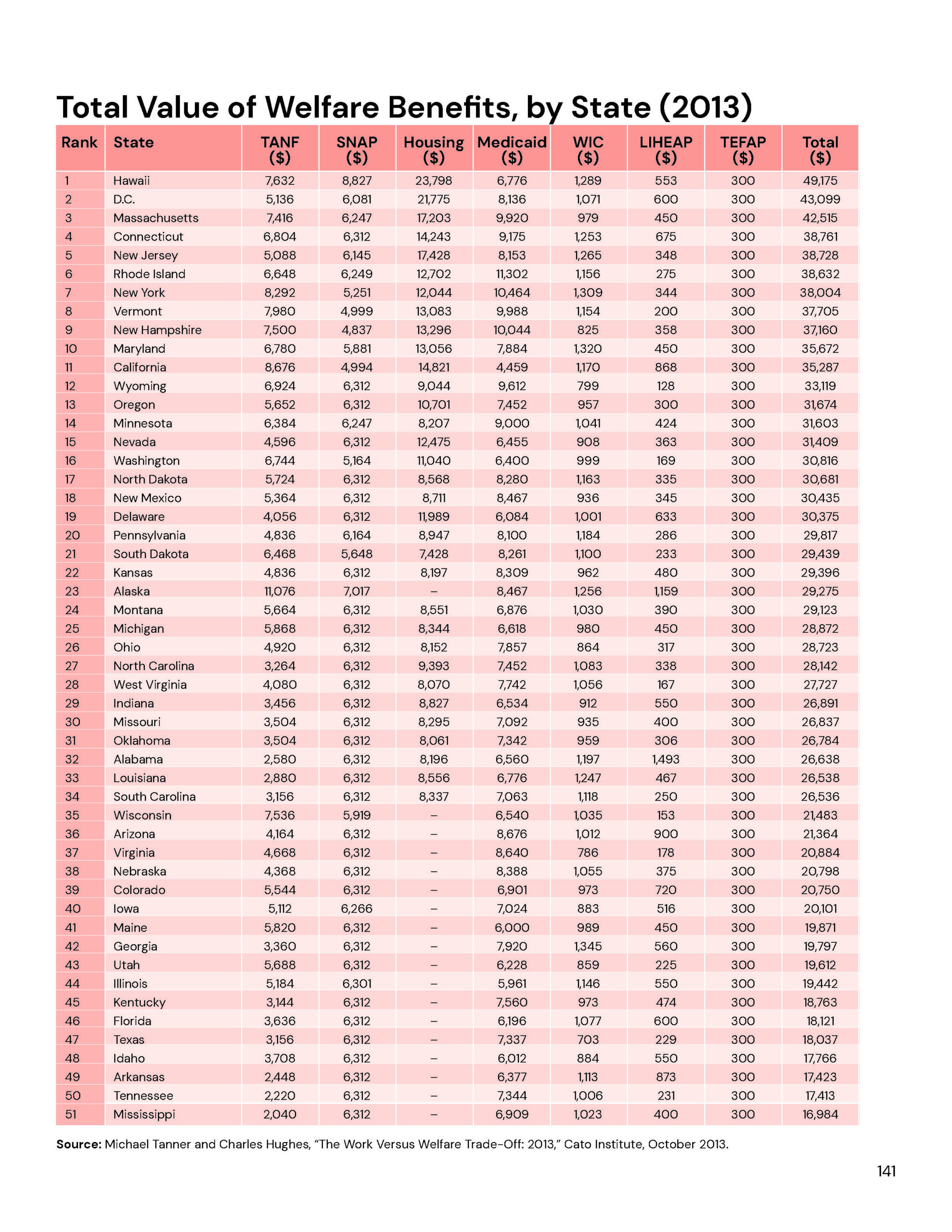Work Vs Welfare
Social wealth and prosperity result from the productivity of individuals. To the extent that society’s individual members contribute their labor, knowledge and ingenuity in productive ways, society grows richer.
However, the incentive structure facing individuals has a substantial impact on their observed willingness to contribute their productive capacities. This means policymakers can have a meaningful impact on social prosperity by providing the correct incentives that induce individuals to contribute their skills and energy.
The level and availability of public support has a direct and meaningful impact on individuals’ decisions to pursue knowledge, skill development and career advancement. Overly generous public subsidy for unemployment can discourage individuals from seeking entry-level positions and working toward achieving their full potential. This is not to say that some form of safety net is undesirable, but policymakers must strike a balance that does not discourage productive activity and which recognizes that communities succeed only when individuals achieve.
Key Points
Nevada offers one of the nation’s most generous welfare packages. According to a state-by-state comparison of the generosity of welfare packages completed in 2013, Nevada offers the nation’s 15th most generous welfare package, if households enroll in every program for which they are eligible. Valued at $31,409 annually, Nevada’s total welfare package is significantly higher than in neighboring states like Arizona, Idaho and Utah, where welfare packages amount to $21,364, $17,766, and $19,612, respectively.1
Nevadans can receive all basic needs without working. Food, housing, utilities, health care and spending cash are all available through the various government programs that distribute them, including: SNAP, WIC, TEFAP, LIHEAP, TANF, Medicaid, and Section 8.
Welfare can subsidize black market activities. Eligibility for participation in most welfare programs is determined by reportable income. This provides an incentive for individuals to pursue only income that is non-reportable, so as not to compromise program eligibility. Thus, welfare programs can have the effect of promoting an underground, illicit economy.
The hourly wage equivalent of welfare benefits is higher than is available at entry-level jobs. When Nevada’s total welfare package is broken down into an hourly wage equivalent, assuming a 40-hour work week, it amounts to $14.34 (2013 dollars).2 This amount is higher than what is offered at most entry-level jobs and encourages individuals to forego entry-level positions in order to retain superior welfare benefits – even though entry-level positions may serve as a springboard for later career advancement and income growth.
Very few welfare recipients participate in work activities. Despite the acclaimed federal welfare reforms of the 1990s that imposed some work requirements on welfare recipients, records indicate that few Nevada beneficiaries actually fulfill these requirements. Only 49.1% of welfare recipients participate in any form of “work activities.” Comparatively, the figure is 87.9% in neighboring Idaho. Further, fewer than half of those who do participate actually work in a traditional job. Others satisfy the requirement through more nebulous “work activities,” including “work preparation” or “job search.”3
Recommendations
Limit availability of welfare. If policymakers truly wish to eradicate poverty and promote social prosperity, they cannot make individuals comfortable in their poverty. Entry-level work in the legal marketplace must become more rewarding than public support.
While most welfare programs are created by Congress and administered by states, state policymakers still have wide flexibility within several programs. Lawmakers in a number of states, for instance, have reduced housing subsidies available to TANF recipients and encouraged them to use their cash benefits to finance their own housing.

1 Michael Tanner and Charles Hughes, “The Welfare Versus Work Trade-Off: 2013,” Cato Institute, October 2013.
2 Ibid.
3 U.S. Department of Health and Human Services, “National TANF Datafile.”
